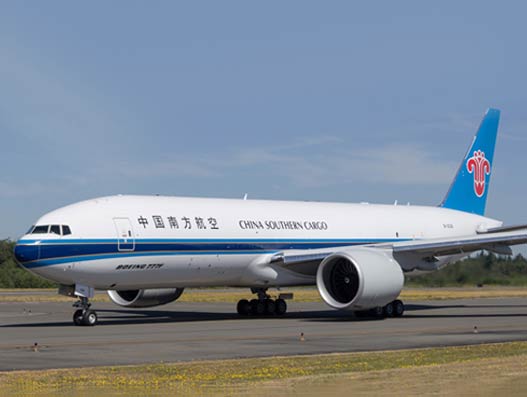
China Southern Cargo implements eAWB on CAN-JFK, ORD
Dec 31, 2015: China Southern Cargo has implemented eAWB on two additional lanes, CAN to JFK (Guangzhou to John F. Kennedy International Airport) and CAN to ORD (Guangzhou to Chicago). China Southern Cargo is one of the leading airlines in eAWB implementation in China. “At present, domestic eAWB volume of China Southern Cargo reaches more […]

Dec 31, 2015: China Southern Cargo has implemented eAWB on two additional lanes, CAN to JFK (Guangzhou to John F. Kennedy International Airport) and CAN to ORD (Guangzhou to Chicago). China Southern Cargo is one of the leading airlines in eAWB implementation in China.
“At present, domestic eAWB volume of China Southern Cargo reaches more than 50000 a month, ranking the first in China and the third in the world, its international eAWB volume ranks second among Chinese carriers,” said the person in charge of eAWB project in CZ.
eAWB in China is progressing slower than expected, lacking industry participation and encountering many practical difficulties. “The reason is that eAWB is far more complicated than e-ticket, involving more stakeholders. Not like the passenger side, air cargo carriers do not have IT systems in common, data interchange between different stakeholders are complicated, at the same time local Customs, Quarantine procedures vary from place to place in China makes the situation even more challenging.”
In order to promote international eAWB, China Southern Cargo continuously strengthen its IT development, and play an active role to coordinate with Guangzhou Customs, Quarantine Office. Up to date, China Southern Cargo have implemented eAWBs on more than ten of its international routes.
IATA initiated e-freight in 2006, which is an industry project aiming at simplifying the business process of air cargo, through the collaboration among shippers, forwarders, ground handling agents, carriers, brokers, customs, CIQ (Commodity Inspection and Quarantine) and other related stakeholders in the air cargo supply chain. The core of this project is to standardise data exchange and the operation procedures in air cargo logistics, so as to replace paper documents by electronic information. E-freight is not only to reduce paper, but also to improve business process to achieve better efficiency. But at the moment, air cargo in China is still relying on paper documents. According to the statistics, air cargo documents of foreign trade in China reach a total of 73 types, including 31 types of import documents, and 42 types of export documents, involving cargo documents used by shippers, forwarders, ground handlers, carriers, brokers, customs, and CIQ.

